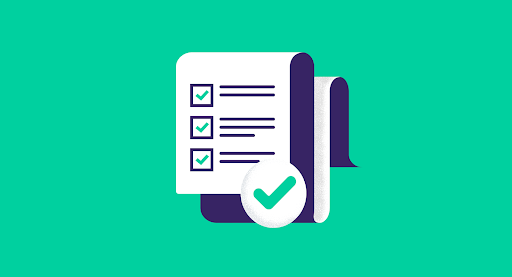Over 54% of companies say that they’ve experienced a cyberattack within the previous year of their operation. The importance of cybersecurity is not even in question anymore.
What’s more concerning is how despite extensive efforts from companies to protect their data and employees, they are still constantly suffering from breaches of malicious nature.
This further shows how cybercriminals are one step ahead and companies need to be on their toes to protect their data, assets, and employees against malpractices.
We’ve come up with some comprehensive strategies to help you cover all bases when it comes to protecting your employee data and privacy. Read on to know more.
6 best ways to protect your Employee Data and Privacy
Employee data refers to all the relevant information about employees working with a company during their term of employment. This can range from basic information such as name, age, gender, and address to intricate information such as their engagement with work and performance over different periods of time.
This is confidential information that is the responsibility of a firm to protect. Employee privacy is an important cornerstone in making your employees feel safe and protected as they work with you. It also helps grow their trust and loyalty in you.
There are many ways to ensure the protection of your employees and confidential information. What we’ve discussed below is a comprehensive plan to ensure all-around protection as well as prepare you for uncertainties. Let’s dive in.
1. Take care of compliance
One of the first aspects you need to take care of when ensuring employee security is taking care of your company’s compliance obligations. Companies operating today are subject to numerous rules and regulations enforced by local, state, federal, and industry-specific authorities.
These regulations are put in place to ensure the lawful working of things as well as the safety of every party involved. Following them is only going to help you ensure your team’s safety in a lawful manner. However, it can be challenging to keep up with them.
There are a variety of regulatory policies that deal with cybersecurity in general, such as GDPR, CCPA, and CPRA. They specifically focus on data protection and employee security, so compliance with them will directly help you ensure your staff’s protection.
As it can be challenging to keep up with the ever-changing rules and regulations, you can hire outside help in the form of consultants or agencies that work solely to keep your compliance on track. They take the load off you and allow you to focus on other aspects.
Here are a few proactive ways you can ensure all-around compliance of your company, especially in cybersecurity:
- Make use of software solutions that help you ensure compliance by keeping your records in order and updating your policies with the new changes.
- Make sure that your employees follow the necessary procedures as it helps keep everything on track.
- Schedule internal audits from time to time to catch errors and rectify them.
- Keep yourself up-to-date with the new changes that come up in regulatory policies to stay one step ahea
2. Fight against common malpractices
Identifying the most common malpractices you’ve suffered in the past or are likely to face will help you prepare yourself to combat them. This step will require you to educate yourself on the common cyber threats before you educate your employees.
Employee data is at risk through threats such as malware, ransomware, distributed denial of service (DDoS) attacks, and even spam. There has also been a rise in attacks through sneaker bots as they sneak through security protocols to damage a company’s sales.
Here is a comprehensive guide on how do sneaker bots work to help you gain a better understanding of them. There are numerous threats that can potentially harm your company. But you need to identify the ones that are most relevant to you.
For that, you need to assess your company structure and your way of operation. What digital practices do you and your employees indulge in the most? Through what activities are you left the most vulnerable to attacks?
For example, if you’re an online store, you are most vulnerable to the above-mentioned sneaker bots. If your business model depends on heavy client interaction, you need to be aware of spam and phishing. Threats like malware are ubiquitous and always need to be protected against.
Here are the common security threats that can harm employees and that every business should protect against:
- Data breaches — they are a result of compromised credentials, software misconfiguration, and malware attacks, and are a direct threat to your employees’ confidential data.
- DDoS — these viruses flood your website so much that they render it useless. They are a nuisance for both your team and your customers but are also tricky to detect.
- Malware — the term encompasses a large number of threats that aim to enter a computer system unauthorized and harm it. Email spam continues to be one of the most common malware threats.
- Insider threats — 60% of all cyberattacks are caused by someone inside the organization. While you work toward enhancing your team’s security, someone might be working against it. You need to identify such threats to deal with them with care.
3. Monitor your team’s success
We talked about insider threats in the previous points and how important it is to identify your own employees and associates that might be working to harm your company. Monitoring your employee’s activities and access will help you with it.
However, this is something that needs to be performed with care. First, you need to only monitor their activities that are relevant to their protection and do not invade their privacy. Secondly, you need to convey to them the what and why of it.
Conduct sessions with your team where you explain how you’re going to monitor their activities, what purpose it serves, and that you will not put their privacy at risk at any cost. This will help establish trust between you both.
Hold one-on-one sessions if you need to make them understand and trust you. Monitoring your team’s access will help you protect them from falling prey to unknown threats. When they have a set path to work on, they’re less likely to be contacted by malicious parties.
4. Train & educate them
Global expenditure on cybersecurity training is expected to reach upwards of $10 billion by 2027. Employee training is crucial in preventing cyber attacks on them and ensuring their data and privacy protection.
There are three levels to training your staff. The first part includes educating them about cyber security: why it’s important and why they need this training. This helps them understand the imminent need for it rather than seeing it as a routine training session.
Keep in mind that for many employees this will begin by understanding the technology they use from the get-go. Not everyone in your staff is going to be tech-savvy and you need to personalize your training module accordingly.
The second part is training employees about what they need to do to ensure that they ensure compliance at all times. This includes the correct way to perform tasks, cataloging tasks, etc. The last part is preparing them for when a threat occurs or they detect something fishy.
Such a training module is comprehensive and covers all bases of employee protection. Your employees understand the significance of it and do the need to ensure that they play their part as needed.
5. Maintain records
This may seem obvious to many people but the importance of keeping clear and organized records cannot be overstated when it comes to cyber security. It directly helps with compliance as we discussed in the first point.
Furthermore, it allows you to sift through records and find what you’re looking for with ease. When everything is on record, it leaves little room for unauthorized parties to sneak in and cause any damage. If they do, they’ll be caught more easily.
6. Encrypt your data
Encryption of data refers to converting information into code to prevent unauthorized access. This is a handy way to protect confidential information about your information and greatly restrict access to it.
This also acts as an extra layer of protection in case your security is compromised. Even if a hacker gets to your data, they will not be able to read the files as they’re encrypted in a code they don’t understand.
Understand the threats you face to prepare your employees to combat them with care
Employee security has been at the forefront of data breaches in recent times. It’s of utmost importance to ensure employee data and privacy protection to maintain the trust and loyalty between you and your team.
Take a look at your current structure to identify the common threats you are likely to encounter and create a plan against them. Furthermore, train your employees to help them understand their role in preventing attacks. Let us know in the comments what you consider is the best way to ensure employee data and privacy protection in your company.
Atreyee Chowdhury is a freelance content writer with more than 10+ years of professional experience. She’s passionate about helping SMBs and enterprises achieve their content marketing goals with her carefully crafted and compelling content. She loves to read, travel, and experiment with different cuisines in her free time. You can follow her on LinkedIn.





























